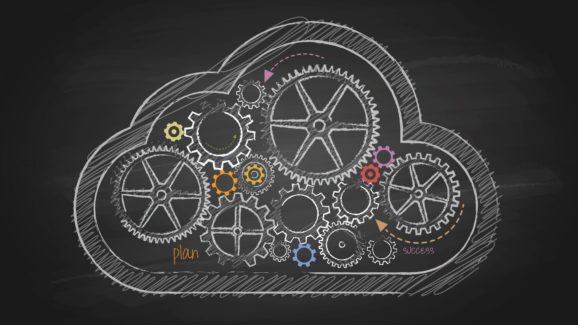December 9, 2021
Cloud adoption is big and getting bigger from coast to coast and worldwide. That’s the conclusion of reputable firms like Gartner and Forrester, both of which have noted that cloud market size and multi-billion-dollar cloud spend are on track to increase by 35 percent and 23 percent, respectively, by year’s end.
Evidence of this tremendous COVID-spurred growth is also apparent at Mindsight, whose clients are boosting their cloud budgets to support remote workforces and off-prem data storage, among other functions.
But shifting cloud-ward is a more complicated process than you might think — one that requires specialists to evaluate workloads, migrate data and manage the cloud environment once it’s up and running.
In light of that, we asked Mindsight Solutions Architect Nick Stover which skill sets are necessary to perform those key tasks. Whether you opt for in-house expertise or, as is far more common these days, outsource to an experienced MSP like Mindsight, these are his top must-haves:
1. Organizational Acumen
In terms of managing cloud environments, organization is key to successful cloud adoption. When you’re setting things up within a cloud environment, whether it’s AWS or Azure, it is the end user or administrator’s responsibility that is deploying the solution to have each item logically separated and identified prior to deployment. When you start creating a network within the Cloud, ultimately, you’re creating a whole bunch of objects. If they are not named and labeled appropriately during object creation, oftentimes you don’t have the ability to rename them later on. Thing can become quite messy very quickly. I think that’s a component of the process that is quite often missed.
Creating Tags and Labels for you objects not only makes the environment easier to manage, but it is also imperative in terms of being able to identify where you current spend is being allocated when the bill comes around. Doing so will lead to greater cost efficiency throughout the lifetime of your subscription That’s a common mistake.

2. Ability to Determine Application Dependencies
The migration path from traditional on-premises environments to the cloud can be tricky but with proper planning can be accomplished with very minimal downtime. When planning for your upcoming migration it is imperative to identify any and all of your current application dependencies. In planning a cloud or hybrid cloud deployment, assessing application dependencies is a key component to de-risking the overall migration. Application dependency mapping should be performed to have a thorough understanding of which applications are dependent on which server sets, which servers may need to be migrated at the same time or individually, and then ultimately how you’re migrating that data. Using tools such as Azure Migrate or the MAPS toolkit can be tremendously helpful in this regard.
3. The Know-How to Properly Configure and Design Environments
This entails being able to logically separate workloads, design network connectivity to and from your environment as well as different geographical regions.
Cloud service offerings make it extremely easy to build or destroy servers on demand, this is what makes a migration to the cloud so appealing. You are no longer bound by the same sizing concerns that you are on premise, you pay for what you consume as you switch from a capex model to an OpEx model. However, this is often a double-edged sword as costs can accumulate quickly as environments are built quickly without much planning. Business will often deploy their cloud infrastructure like how they have been doing so for years rather than determining how to improve cost, performance or efficiency.
There are multiple different flavors to choose from in terms of processing power, memory, etcetera, and each one comes at a different hourly cost. Businesses also must consider data egress costs. Knowing how to connect and right-size your environment can prove to be extremely advantageous. It is also imperative to understand when to leverage certain PaaS or SaaS offerings instead of opting for a traditional server approach. This can often not only improve performance but provide less overhead for the IT team to manage allowing them to focus their time on other critical business components.

Like we said, it’s complicated. But not for cloud experts. That’s why it’s important to bring one or more of them on board. Doing so isn’t an insignificant expense, that’s true, but it’s also a crucial investment that will pay off big in savings and stability not so far down the line.
“You often have departmentalized engineers who are able to focus on a certain area,” Stover says. “But you really need someone who has a solid foundation across the board in order to properly assess things and determine which solutions may or may not be the right fit. Most organizations have solid players, but they don’t have that level of technical expertise. It’s a different ballgame when you’re focusing on just one vertical within your own business versus trying to develop a plan for the entire infrastructure, understanding where each piece is going to fit, and how you’re ultimately going to deploy it.”
About Mindsight
Mindsight, a Chicago IT services provider, is an extension of your team. Our culture is built on transparency and trust, and our team is made up of extraordinary people – the kinds of people you would hire. We have one of the largest expert-level engineering teams delivering the full spectrum of IT services and solutions, from cloud to infrastructure, collaboration to contact center. Our customers rely on our thought leadership, responsiveness, and dedication to solving their toughest technology challenges.
About the Expert
Nick earned a Bachelors in Computer Science with a core focus on Network Security from Northeastern Illinois University. He has been with Mindsight for three years. Having worked for other MSPs over the years, he has vast experience in migrating production workloads to the cloud in addition to designing cloud solutions for clients based on business needs.
